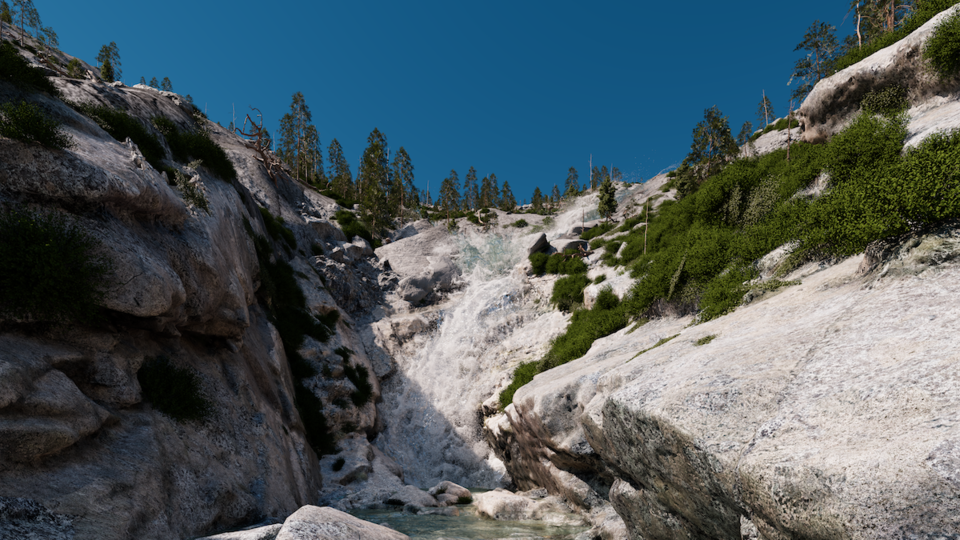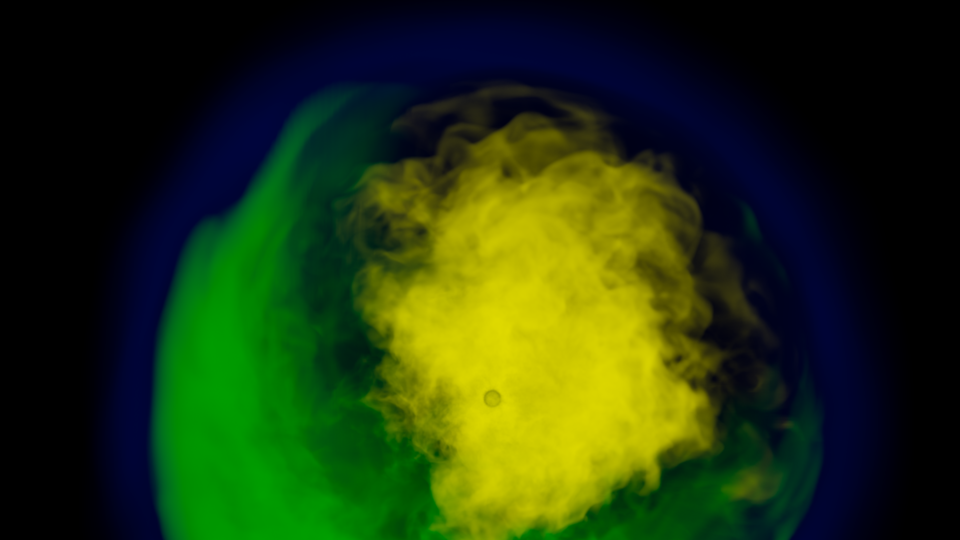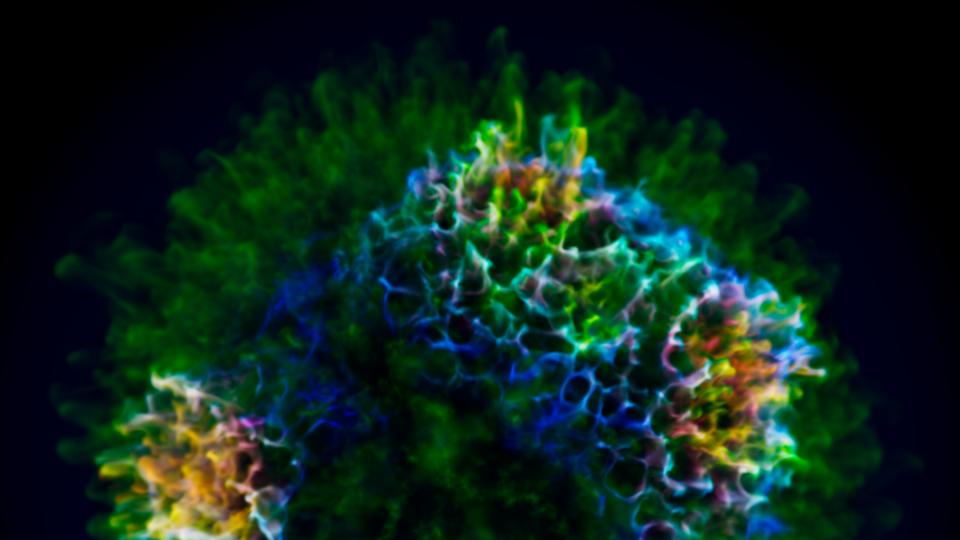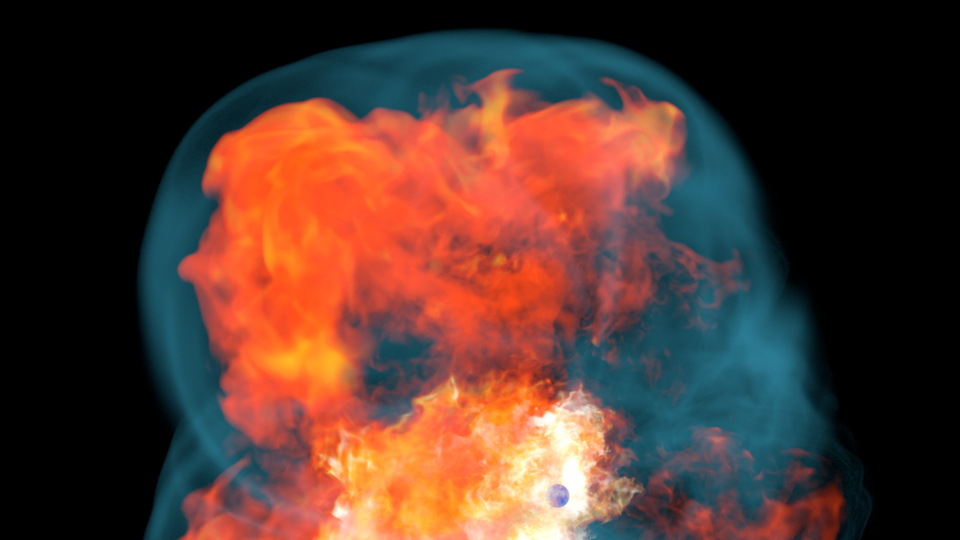The California Academy of Sciences is a renowned scientific and educational institution with a mission to regenerate the natural world through science, learning, and collaboration. Based in San Francisco’s Golden Gate Park, it is home to a world-class aquarium, planetarium, and natural history museum, as well as innovative programs in scientific research and environmental education—all under one living roof. Museum hours are 9:30 am – 5:00 pm Monday – Saturday, and 11:00 am – 5:00 pm on Sunday. Admission includes all exhibits, programs, and shows. For daily ticket prices, please visit www.calacademy.org or call (415) 379-8000 for more information
Narrated by Diego Luna, original all-digital production visualizes never-before-seen celestial events to reveal our elemental connection to the Universe
*In February, 2024 Spark: The Universe in Us won Best Astronomy Show at the Dome Under Festival in Melbourne, Australia. In May, 2024 the film won Best Educational Film at Dome Fest West in Boulder, Colorado, and was named an official selection for the SIGGRAPH Electronic Theater. In June, 2024, the film received the Best Science award at the FullDome Festival.
SAN FRANCISCO, CA (November 1, 2023) - Where did the building blocks of life come from? The answer lies in the hearts of distant stars and incredibly powerful explosions such as supernovae. Premiering November 10, 2023, the California Academy of Sciences’ newest original, all-digital planetarium show, Spark: The Universe in Us, takes viewers on a journey across the universe and deep into a dying star with cutting-edge visualizations to show how celestial events forged the elements that make up the Solar System, Earth, and us. Watch the trailer here.
"At its core, Spark is an origin story. The film is about our deep connection to the world around us—even stars millions of light years away,"said Ryan Wyatt, senior director of Morrison Planetarium and Science Visualization at the California Academy of Sciences. In one of my favorite scenes, a simulation of the evolution of our galaxy over billions of years shows how the elements inside the Earth and inside us originated across an absolutely enormous volume of space–larger than our galaxy and extending out into other galaxies. This means that two carbon atoms in the same molecule inside you could have originated hundreds of thousands or even millions of light years apart! To me, that’s an incredible, mind-blowing concept that we were eager to show through the unique medium of a planetarium film."
Narrated by actor Diego Luna, Spark is the ninth original in-house production by the Academy’s award-winning Visualization Studio and will be offered in both English and Spanish, with the latter available in winter 2024. Spark marks a number of visualization firsts, including: never-before-seen gravitational lensing around neutron stars; a single sequence showing all the stages of the core-collapse supernova (the progenitor star, the shell burning around the core, then the explosion); and the first visualization of the Milky Way’s evolution in reverse, spanning three billion years and derived from approximately 1.6 Terabytes of simulation data.
Science advisers from across the U.S.
To bring the origin of the elements to life on Morrison Planetarium’s 75-foot dome, the Academy team worked closely with a panel of seven science advisers from Ohio State University, University of Arizona, University of California Santa Cruz, University of Washington, and the Academy’s own Institute for Biodiversity Science and Sustainability.
“As science advisers, we leverage our deep astronomical expertise as we work with the Academy’s Visualization Studio to determine the journey that we want to take people through,” says Spark lead science adviser and Academy Fellow Dr. Enrico Ramirez-Ruiz, professor of astrophysics and astronomy at the University of California, Santa Cruz. “Using cutting-edge simulations from astronomy as part of the storytelling helps audiences understand really complex concepts, like the journey of our atoms, how they came to be, and how we came to be. We hope that people leave the show with a new perspective on our cosmological past and the really beautiful, intimate connection between the Universe and us. Spark helps break down some of the barriers that divide us as humans and underscores that the Universe deeply unites us.”
Connecting life on Earth to the Cosmos
The show opens in the arresting granite landscape of California’s Sierra Nevada mountains, grounding the film in the familiar to underscore our relationship to the rock, water, trees, and plants on our home planet. To accurately animate the majestic landscape, the Visualization Studio team traveled to Horsetail Falls west of Lake Tahoe—the only location in the film that humans can visit—to capture reference photos and video, and employed photogrammetry to help digitally model the landscape.
As night falls on the terrestrial scene, the film transports us into space, where we arrive just in time to witness the last few minutes of a star’s life. To animate the eventual implosion of the star’s core, the Academy's Visualization Studio drew on current scientific data and computational models, visualizing a sequence of events that have never been shown together before.
Under development for over two years, Spark includes more data visualizations than any other show the studio has produced, including 49.9 million stars rendered in 3D (up from 128,000 shown in the last show, Living Worlds). Visualizations in the film leverage approximately 50 Terabytes of simulation output data from collaborators in the US, Canada, Italy, Germany, Australia, and Taiwan.
Spark shows the different celestial events that created the elements as we know them, including exploding white dwarfs, merging neutron stars, and majestic planetary nebulae. The violent collisions and fiery explosions appear unexpectedly calm, shown in serene slow motion against the beautiful, awe-inspiring expanse of space and accompanied by an evocative original score. The film traces the remnants of these stellar explosions, visualizing the origins and dispersal of individual elements in the evolution of the gaseous clouds (nebulae) left behind by celestial events. Heading back to Earth, we see evidence of the elements that give us a habitable world: the water in our oceans and clouds, the carbon that makes up flora and fauna (including humans!), and the silicon, iron, and nickel that make up the core of our planet. We trace our elemental ancestry to the beginning of the Universe, through generations of stars across a hundred thousand light years, an incredible volume of space in which individual diverse events contributed to create us, here, now.
A human story in the stars
“Spark is the beginning of the story of the human race. We're not talking about the origin of the galaxy, although the galaxy is the backdrop for the story that we’re telling. We’re not even talking about the origin of Earth. We’re talking about the atoms in your body, which came from vast distances,” says science adviser and Academy Fellow Dr. Sandra Faber, emeritus professor of astronomy at the University of California, Santa Cruz, and an astronomer at Lick Observatory. “A human story is analogous to the story of a star or a galaxy or a solar system; it’s just occurring in a shorter period of time. So I hope audiences appreciate seeing themselves as a very special moment in time.”
Spark: The Universe in Us will play every day in Morrison Planetarium following the premiere on November 10 (see the daily calendar for showtimes). During every Morrison Planetarium show a presenter will share a live update on the latest scientific discoveries and data that inform our knowledge of life in our universe and beyond.
RELATED EVENTS:
Audiences interested in learning more about the science that informed Spark will have the opportunity to hear from two science advisers in upcoming Benjamin Dean Astronomy Lectures in Morrison Planetarium:
- Monday, November 13, at 7:30pm - Dr. Enrico Ramirez-Ruiz, professor of astrophysics and astronomy at University of California, Santa Cruz, will deliver Cosmic Alchemy: How Neutron Star Smash-Ups Forge Heavy Atoms, a talk focused on recent advances in our understanding of the origin of the heaviest and rarest elements in the Universe.
- Monday, December 4, at 7:30pm - Dr. Carl E. Fields, Feynman distinguished postdoctoral fellow at Los Alamos National Laboratory, will deliver The Remarkable Death of a Massive Star, including a discussion of recent technological advancements that can unlock secrets about the violent nuclear fusion occurring deep within dying stars.
Images and interviews available upon request. Reach out to Jeanette Peach, jpeach@calacademy.org.
Press Contacts
If you are a journalist and would like to receive Academy press releases please contact press@calacademy.org.
Digital Assets
Hi-res and low-res image downloads are available for editorial use. Contact us at press@calacademy.org to request access.





